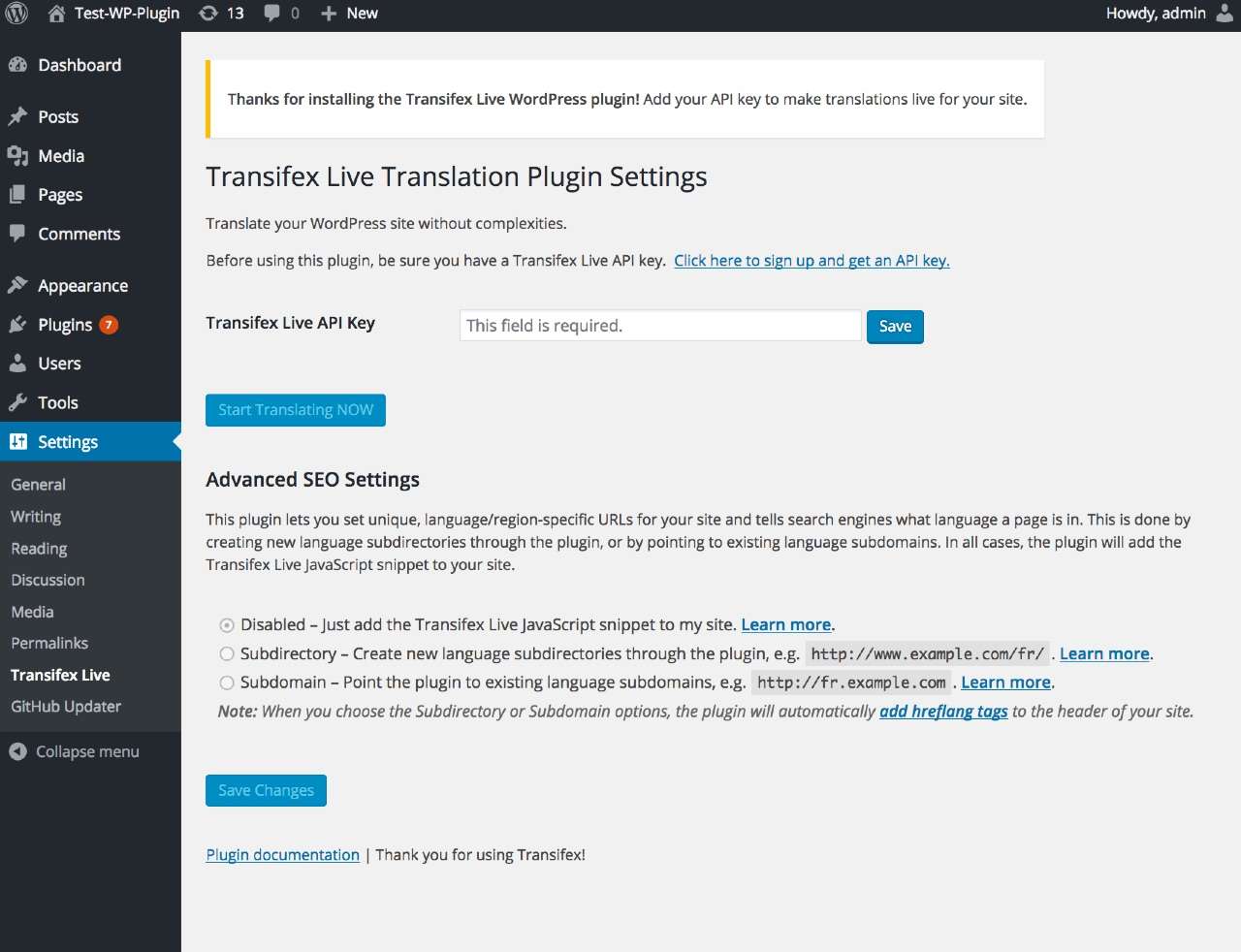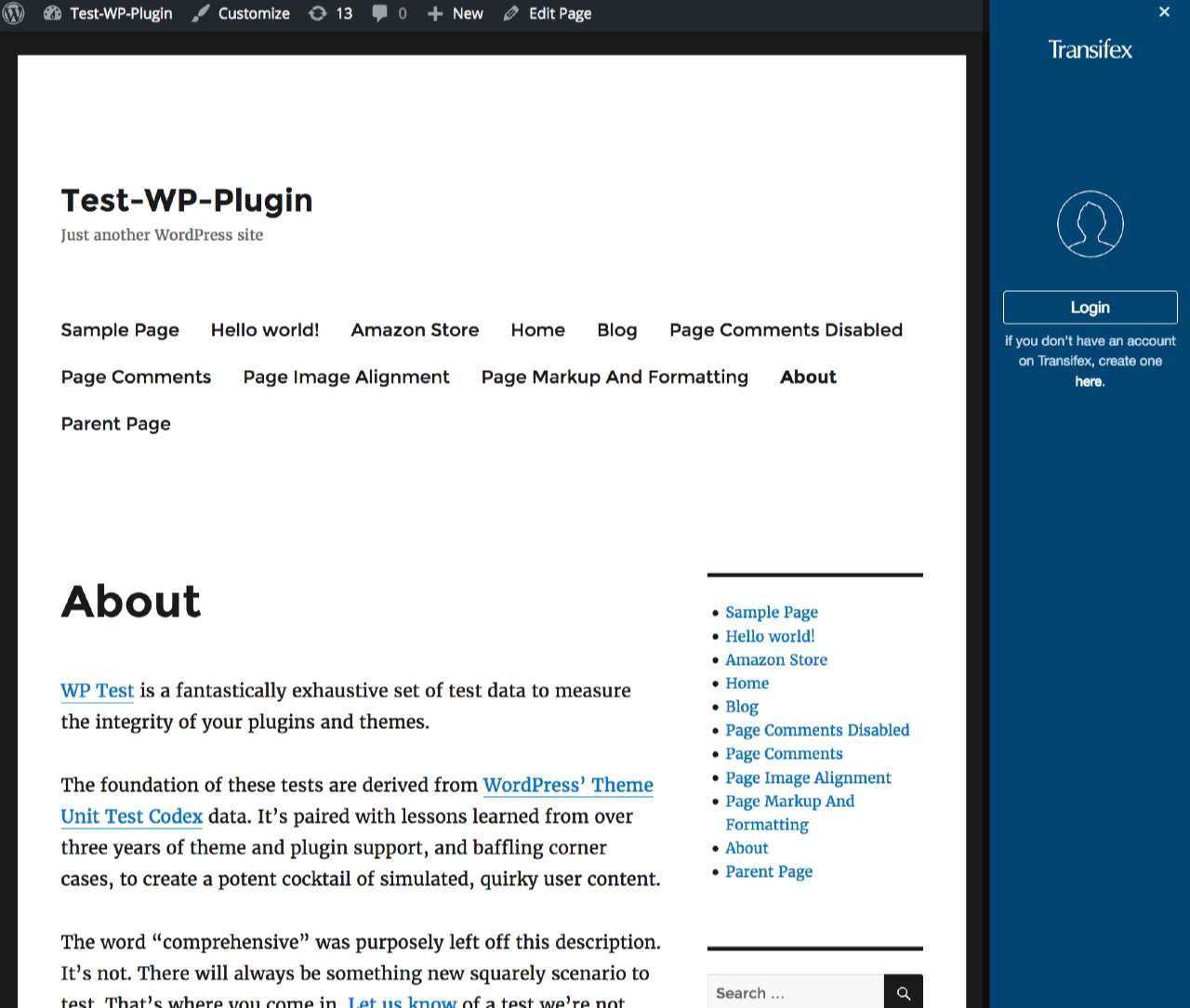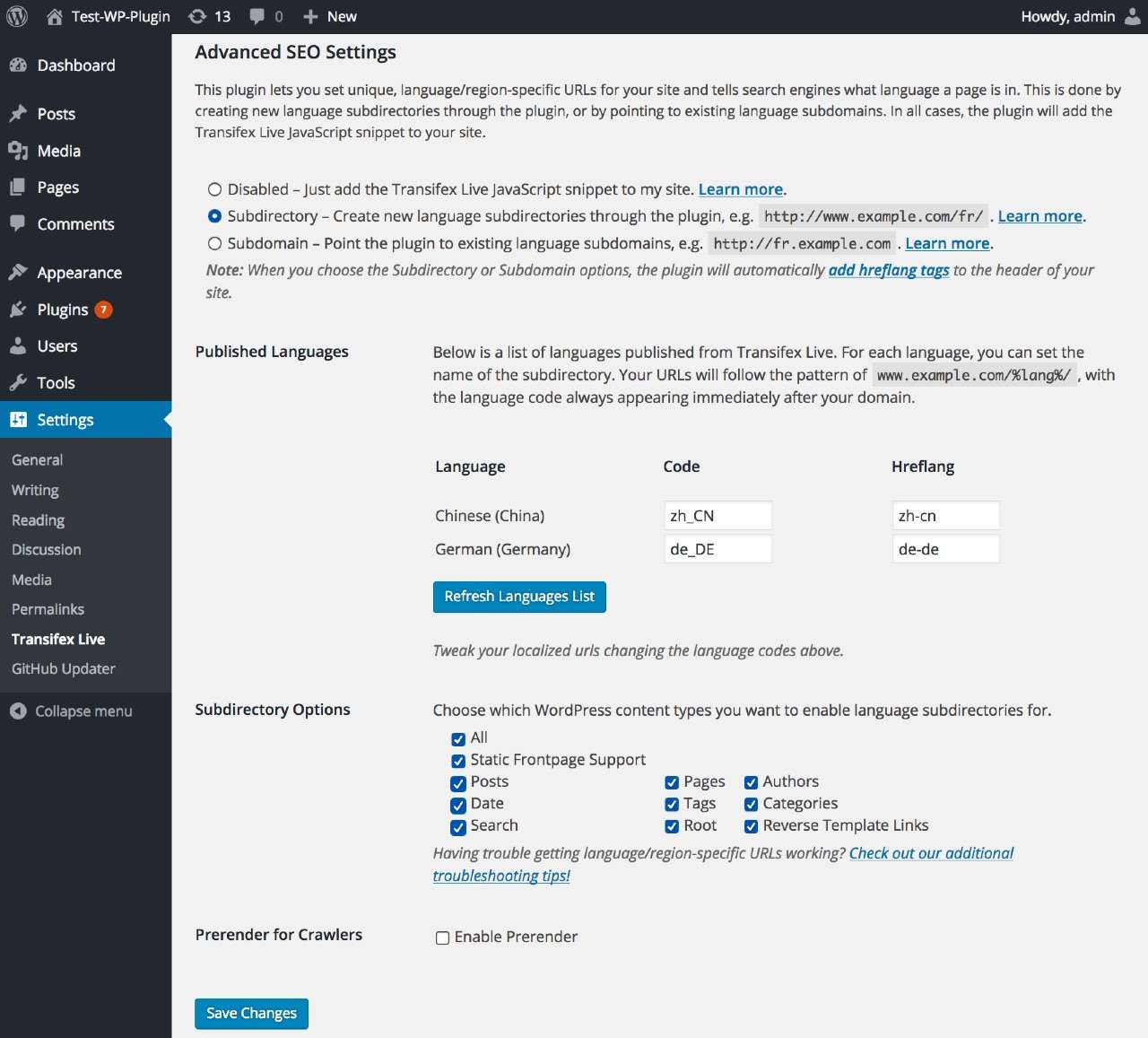Description
This plugin is designed to be used with Transifex localization platform. There’s no need to create one language per post, insert language tags, or have multiple WordPress instances. Your site’s content is automatically detected and ready to be saved to the Transifex localization platform, where you can translate with the help of your existing translators, or order professional translations from Transifex partners.
In order to use Transifex, you will need to sign up here for an account. This plugin also requires a Transifex Live API key. More information about how to obtain a key can be found in the plugin documentation.
Features:
- Integrates Transifex into WordPress
- Adds support for localized language URLs either by subdomain or subdirectory.
- Adds support rewriting all URLs on the page
- Automatically adds hreflang tags to your pages.
- Adds supports for using an external prerendered server for SEO purposes
- Works with WordPress multisite
Learn more about the Transifex Live Translation Plugin.
Get Involved:
Developers can contribute via the plugin’s GitHub Repository.
Translators can contribute new languages to this plugin or our other WordPress plugins through Transifex.
Minimum Requirements:
- WordPress 3.5.2 or greater
- PHP version 5.4.0 or greater
- MySQL version 5.0 or greater
Tips for developers
The Transifex Live plugin uses WordPress hooks to manipulate the links found in your website’s content, so they always point to the appropriate language. If you use custom post types (or one of your plugins does) that emits the ‘the_content’ filter, our code might not be triggered.
For those cases, it is recommended to manually trigger our custom filter ‘tx_link’ before you return your content, as seen in the example below:
Ex. $updated_content = apply_filters(‘tx_link’, $original_content);
It is also recommended to use widgets in your theme instead of custom code, since this allows you to make your integration more future proof against incompatibilities with 3rd party modules.




